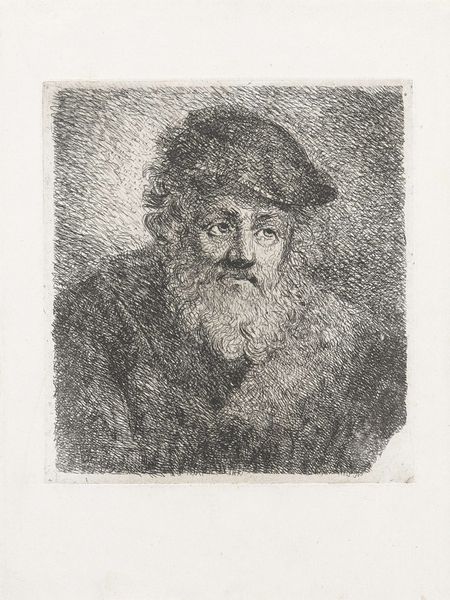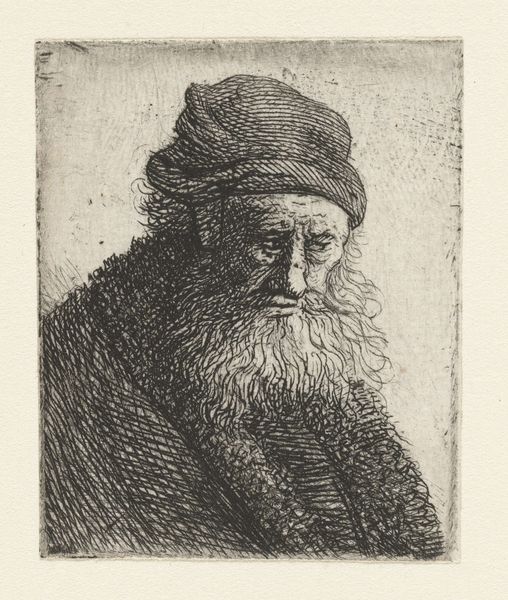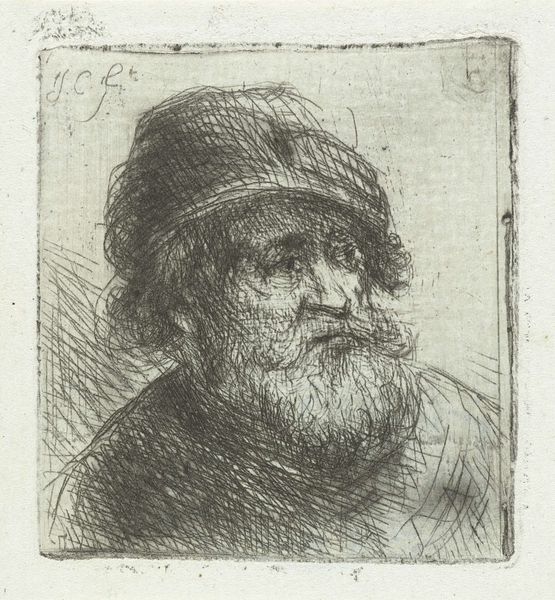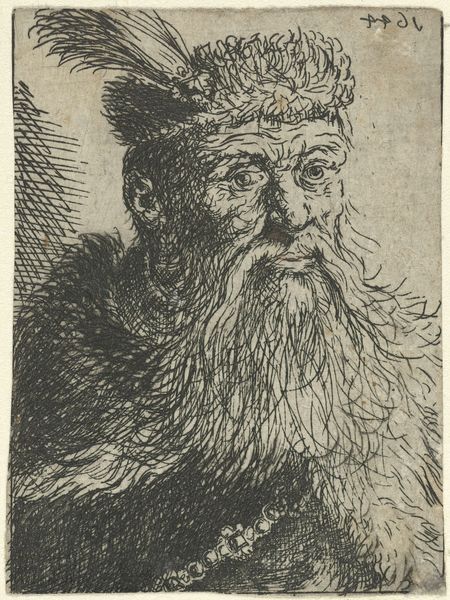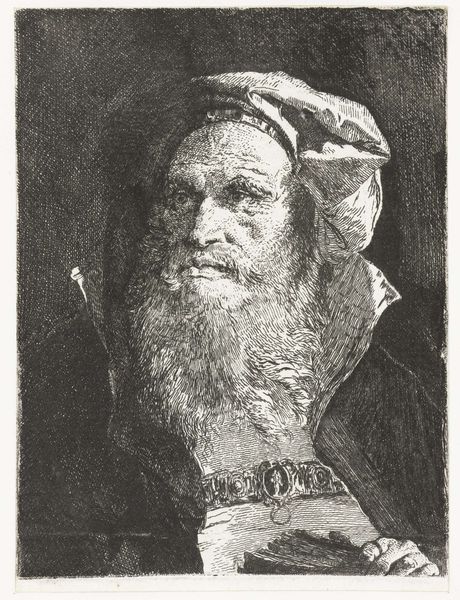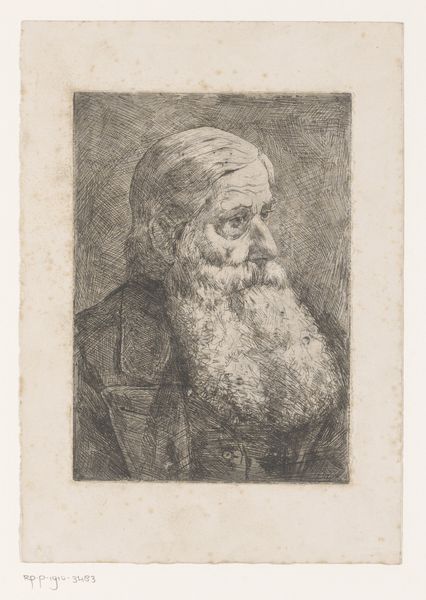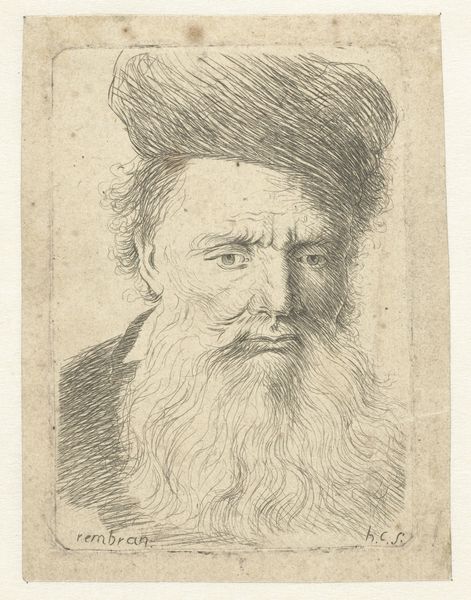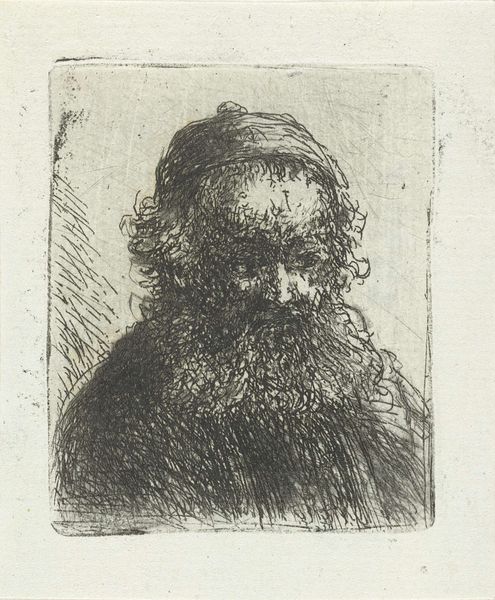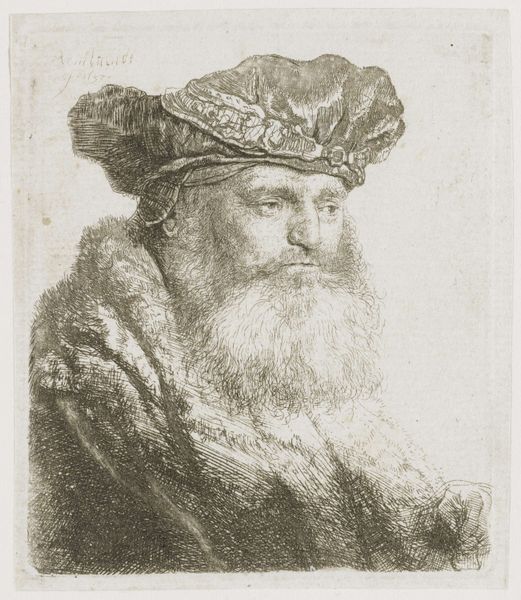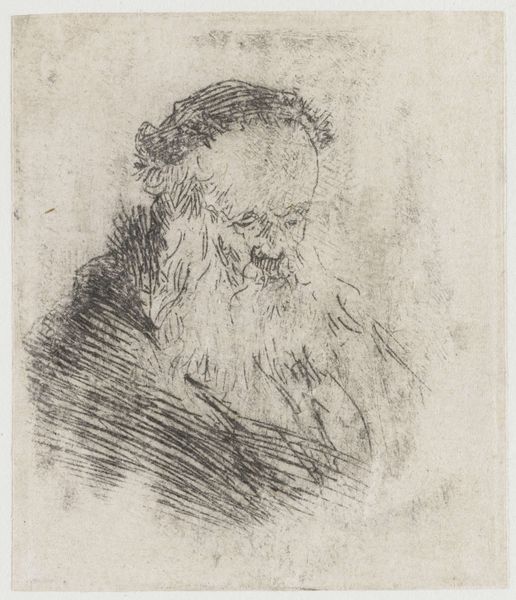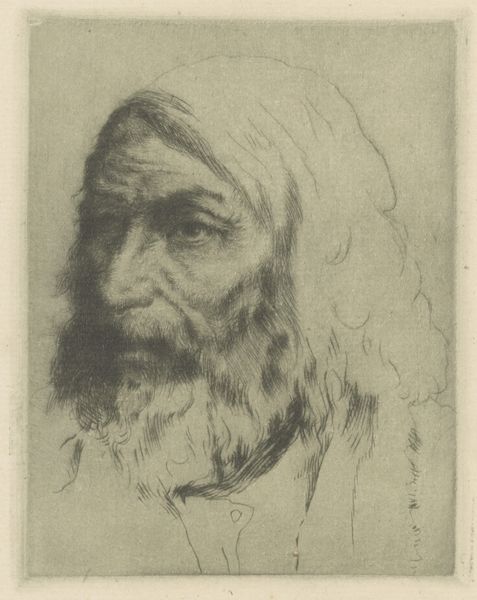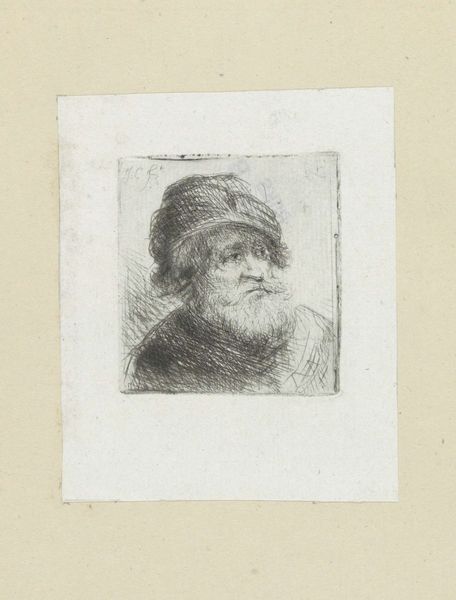
print, etching, engraving
#
portrait
# print
#
etching
#
line
#
engraving
#
realism
Dimensions: 105 mm (height) x 78 mm (width) (plademaal)
Editor: Here we have "Gammel skægget Mand. Brystbillede en face" – or "Old Bearded Man. Bust Portrait facing" – by W.A. Müller, made sometime between 1733 and 1816. It’s an etching and engraving, so a print. I'm immediately struck by the intensity of his gaze and the incredible detail achieved through all those tiny lines. It feels... raw, somehow. What stands out to you in this piece? Curator: Raw is a brilliant way to put it. It’s funny, isn’t it, how a simple etching can feel so emotionally charged? For me, it's the crosshatching, that storm of lines that builds form out of seeming chaos. Do you get a sense of how meticulously Müller observed his subject, yet simultaneously allowed a freedom in the execution? Almost like he was wrestling the man onto the page! Editor: I do. It’s almost like the lines themselves are vibrating with energy. So, this is a portrait—was it common to create prints of portraits back then? Curator: Absolutely. Prints made art more accessible. Think of them as the selfies of the 18th century! This is clearly a study of character, maybe even Müller searching for something in the face. A kind of melancholic beauty? Does his gaze remind you of anything? Perhaps another artist known for intense self-scrutiny, like, say, Rembrandt? Editor: Oh, I see what you mean. There is that same kind of… humanity? Looking at this print feels incredibly intimate. Curator: Exactly! We're not just seeing an old man; we're witnessing Müller's exploration of aging, wisdom, and maybe even his own mortality. Editor: That's… sobering. I’ll definitely look at etchings differently now. Thanks for opening my eyes to all those layers! Curator: My pleasure. Art's always whispering secrets, isn’t it? It just takes a bit of looking, a bit of feeling, to hear them.
Comments
No comments
Be the first to comment and join the conversation on the ultimate creative platform.
